Birds are known for their ability to build intricate and diverse nests. From cup-shaped nests to platform nests, each bird species has its own unique way of constructing a home for their young. Nests serve as a safe and secure environment for birds to incubate their eggs and raise their young.
In this article, we will explore the different types of bird nests with pictures. We will look at the materials used, the shapes, and the birds that build them.
You are reading: 13 Different Types Of Bird Nests With Pictures
Whether you are a bird enthusiast or just curious about the world around you, this article will provide you with an insight into the fascinating world of bird nests.
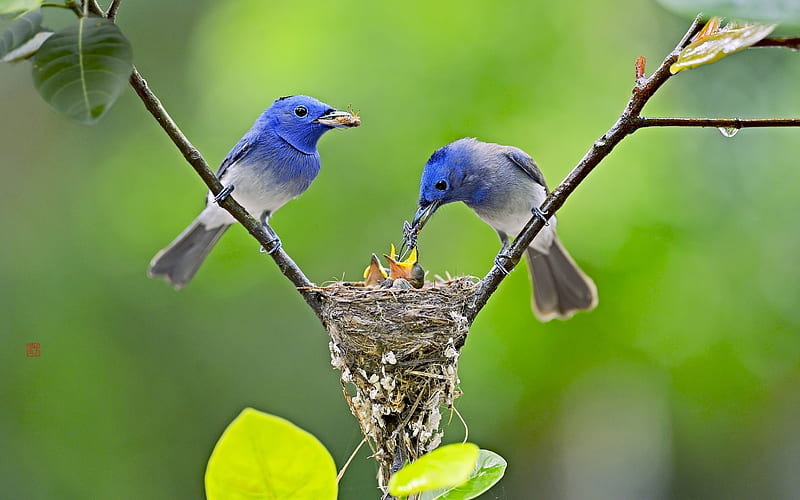
13 Different Types Of Bird Nests With Pictures
Cup Nest
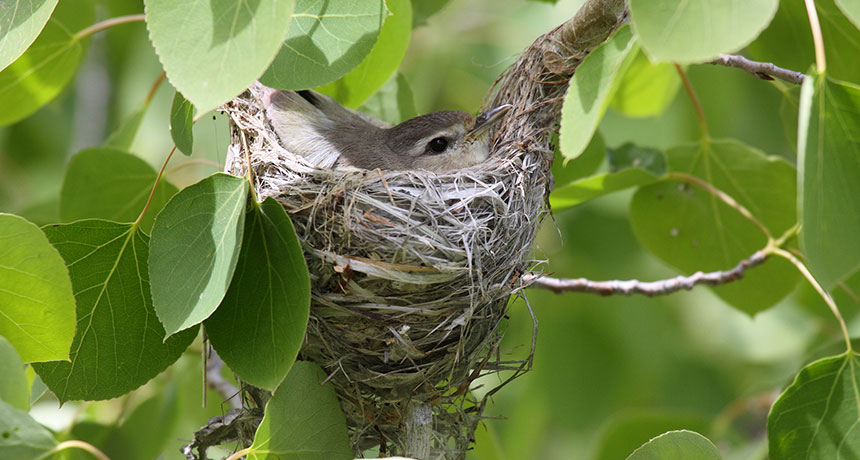
Cup nests are the most common type of bird nests, used by many different bird species such as blackbirds, warblers, thrushes, hummingbirds, and swifts. These nests are often made with pliable grasses, weeds, and other plant materials, and are positioned along tree branches or tree forks, or may be nestled on ledges or in numerous unique places.
The overall size, dimensions, and depth of the cup may differ, and some birds build distinct inner and outer cup layers. Additionally, some birds like kinglets and New World warblers use spider silk to bind their materials and keep their nests tight and compact.
Cup nests can be found in trees, bushes, ledges, or even on the ground.
Platform Nest
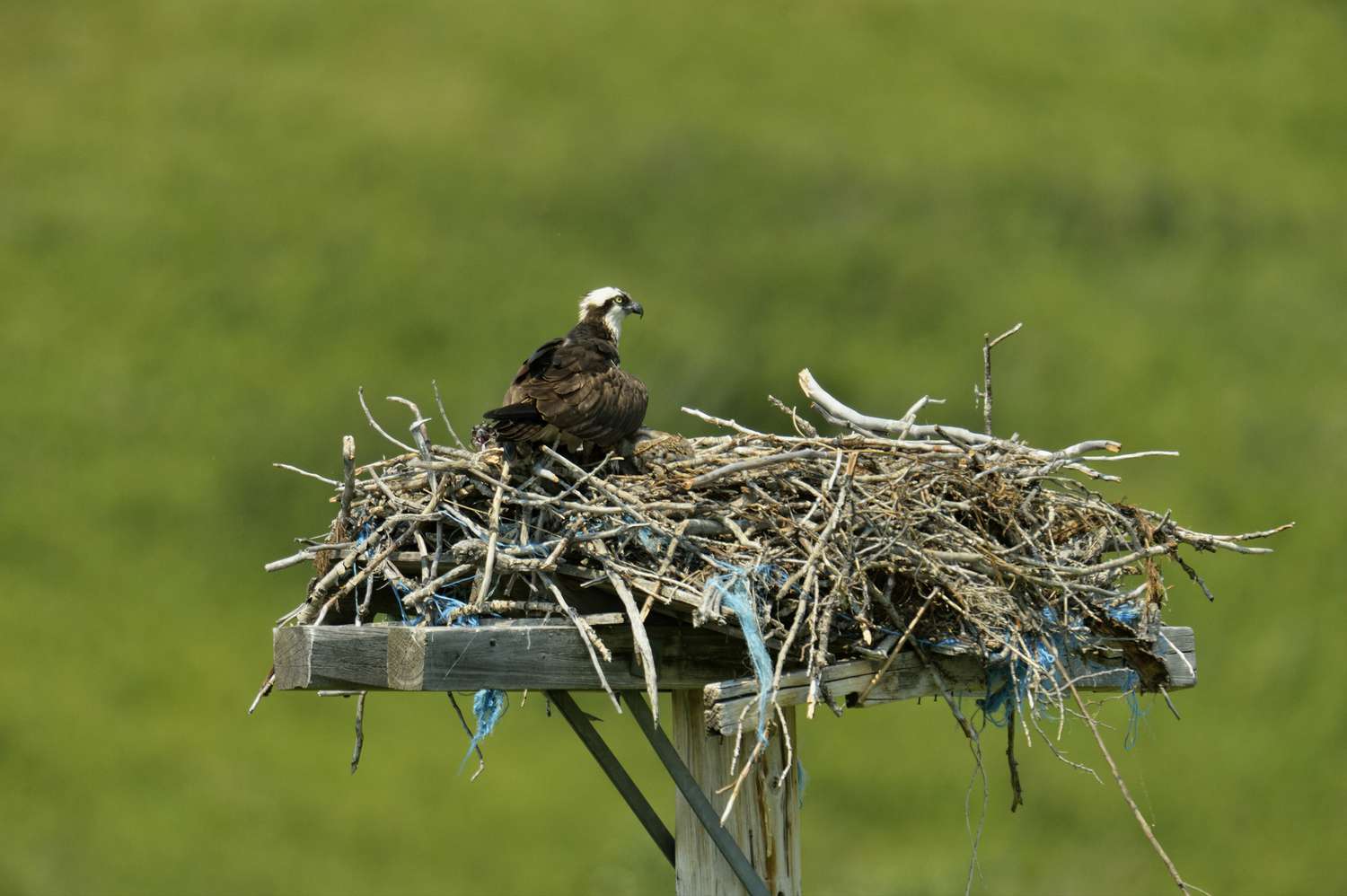
Platform nests are relatively large, bulky structures often built of larger twigs or sticks. The surface is typically flat or may have a very shallow depression, but not enough to be considered a deliberate cup.
Many birds reuse platform nests for many years, often adding material to the nest each year. Platform nests are built by many large raptors, herons, and other large wading birds.
Examples of birds that build platform nests include bald eagles, ospreys, great blue herons, and white storks. Robins also build large nests of twigs, roots, grass, and leaves lined with a clay cup. The cup is then lined with fine grass, hair, and wool.
Burrow Nest
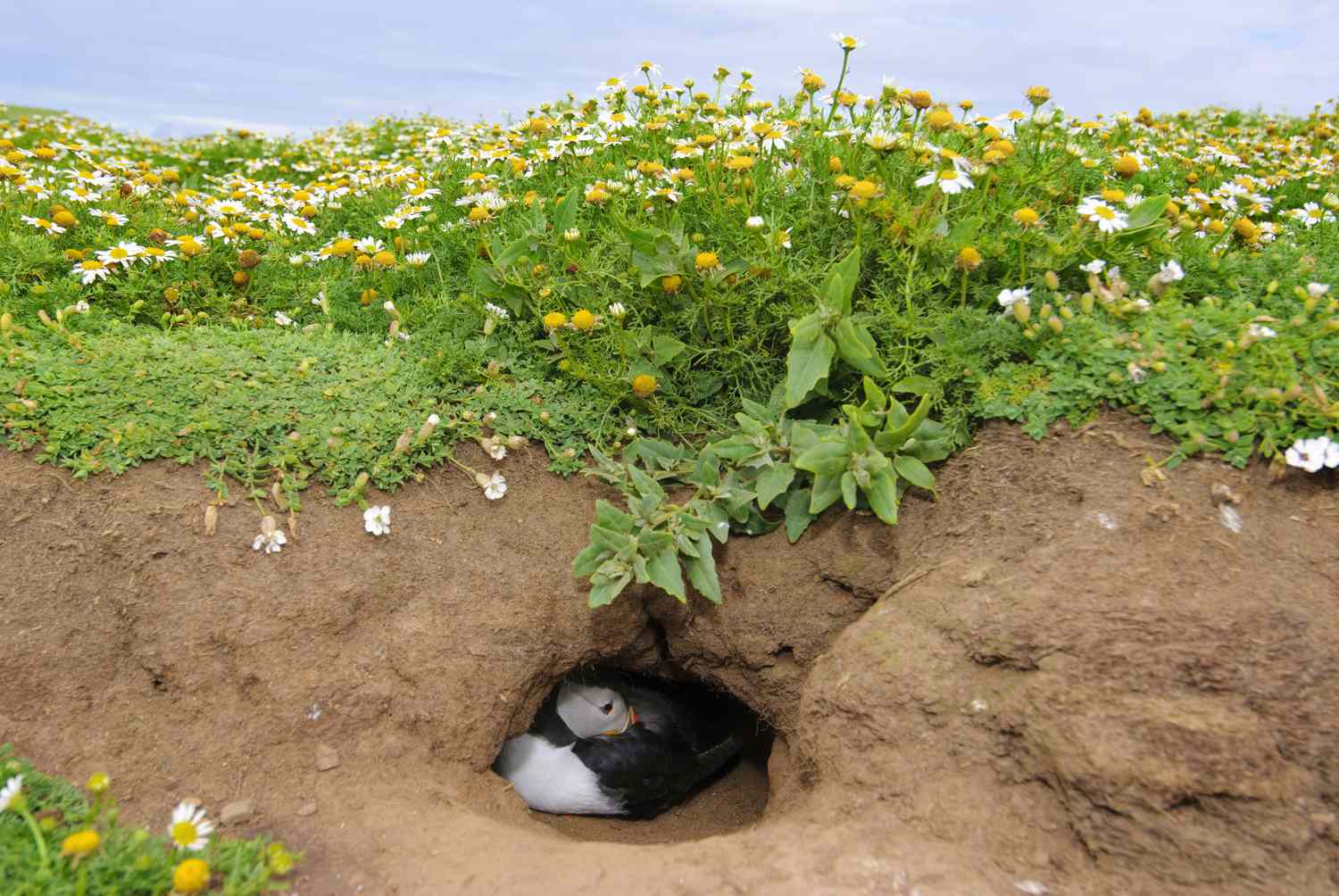
Burrow nests are a type of bird nest that is dug into the ground, providing shelter and protection for eggs and young birds. Most burrow-nesting birds excavate their own burrows, but some use those excavated by other species and are known as secondary nesters.
For example, burrowing owls sometimes use the burrows of prairie dogs, ground squirrels, badgers, or tortoises. The length of the tunnel varies depending on the substrate and the species.
Sand martins make relatively short tunnels ranging from 50-90 cm, while those of the burrowing parakeet can extend for more than three meters. Burrow nests are particularly common among seabirds at high latitudes, as they provide protection against both cold temperatures and predators.
Examples of birds that build burrow nests include puffins, shearwaters, some megapodes, motmots, todies, most kingfishers, the crab plover, miners, and leaftossers.
Scrape Nest

Scrape nests are the simplest type of bird nests, consisting of a shallow depression in soil or vegetation. The rim of the nest is deep enough to keep the eggs from rolling away and may be lined with bits of vegetation, small stones, shell fragments, or feathers.
These materials may help to camouflage the eggs or provide some level of insulation. Scrape nests are used by many ground-nesting birds, including shorebirds, gulls, terns, nighthawks, vultures, and other species.
Eggs and young in scrape nests, and the adults that brood them, are more exposed to predators and the elements than those in more sheltered nests. The eggs of most ground-nesting birds are cryptically colored to help camouflage them when the adult is not covering them.
In cool climates, the depth of a scrape nest can be critical to both the survival of developing eggs and the fitness of the parent bird incubating them.
The scrape must be deep enough that eggs are protected from the convective cooling caused by cold winds, but shallow enough that they and the parent bird are not too exposed to the cooling influences of ground temperatures.
Mound Nest
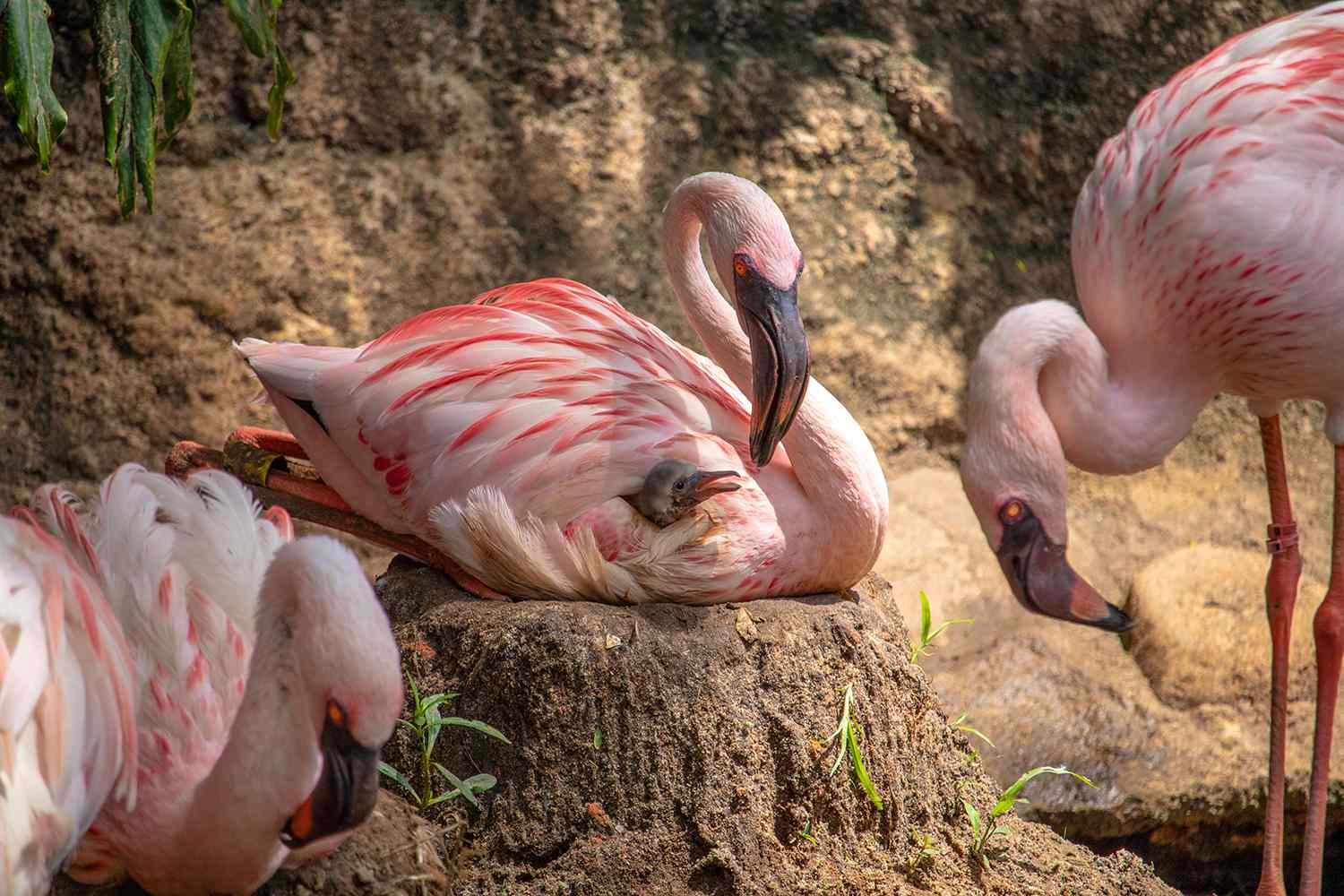
Mound nests are a type of bird nest that is built on the ground and is a large accumulation of nesting material in a tall cone or bell-shaped structure. The height and diameter of the nest mound will vary, and the eggs may be nearly buried in the nest, which helps provide additional protection and insulation, or they can rest on top of the mound.
Mound nests are often made from mud, branches, sticks, twigs, and leaves. The decomposition of the material generates heat, which imitates the incubation process. Birds that build mound nests include horned coots, Adelie penguins, malleefowl, and most flamingo species. The size of these nests can reach sizes of more than 100 m2 of material.
In most mound-building species, males do most or all of the nest construction and maintenance. The entire structure is typically reused for many years, and new material must be added each year to generate the appropriate amount of heat.
Cavity Nest
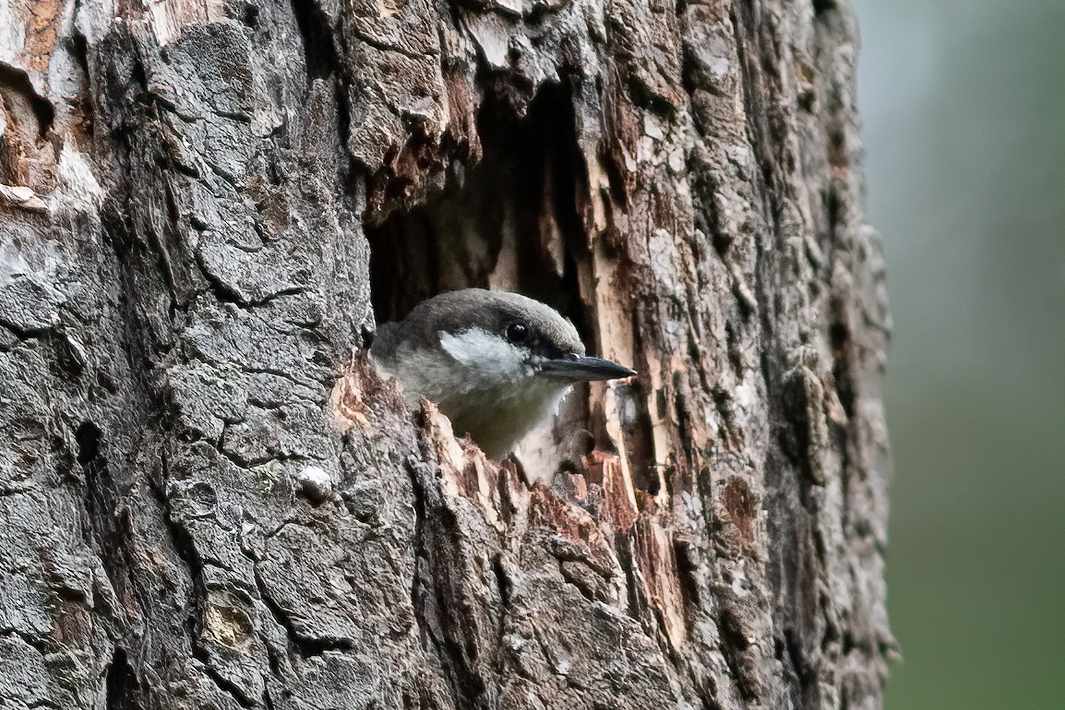
Cavity nests are a type of bird nest that is built inside sheltered chambers or cavities. Cavity-nesting birds do not typically apply to completely constructed cavities, such as birds that weave elaborate, enclosed nests, but instead is reserved for birds that rely on nesting shelter from other sources and build their nests within that shelter.
There are two types of cavity-nesting birds: primary cavity nesters and secondary cavity nesters. Primary cavity nesters are birds that excavate or make their cavities, such as woodpeckers that drill out chambers in suitable trees or ground-nesting species that may dig out burrows in riverbanks.
Secondary cavity nesters do not excavate their cavities but use existing cavities either excavated by primary cavity nesters, cavities created by broken branches or decaying wood, or artificial structures that resemble a sheltered chamber or cavity, such as birdhouses.
Many bird families have at least a few members who are cavity nesters, including woodpeckers, chickadees, parrots, nuthatches, trogons, flycatchers, wrens, and bluebirds. Ducks such as the mandarin duck and wood duck also nest in cavities, as do some of the owl species.
Hanging Nest
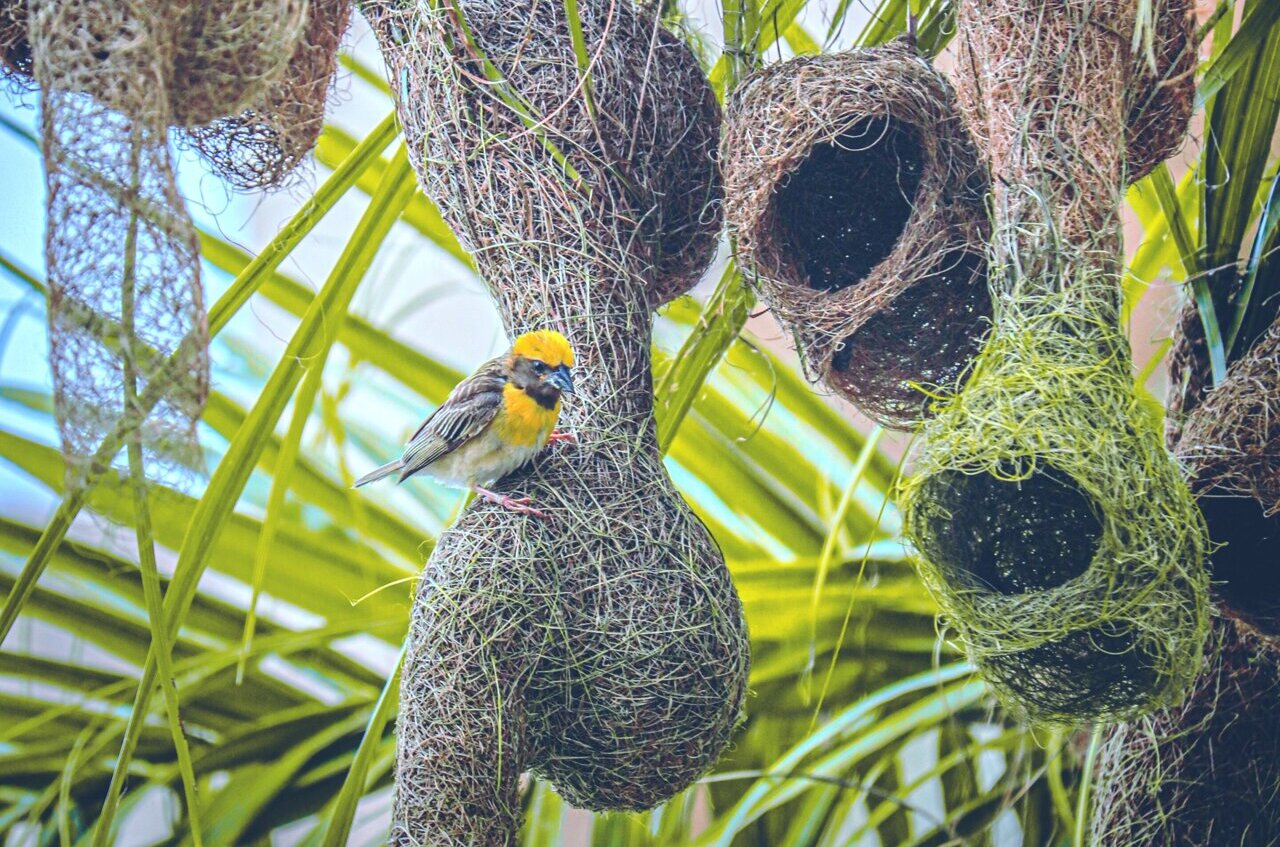
Hanging nests are a type of bird nest that is suspended from tree branches or other structures. These nests are often woven baskets that are intricately constructed from grasses, twigs, and other plant materials.
Hanging nests are built by many bird species, including orioles, weavers, and some species of hummingbirds. Some birds, such as the Montezuma oropendola, build hanging nests that can be up to 3 meters long and contain multiple chambers for nesting.
A recent study found that some birds build hanging nests, particularly those with extended entrance tunnels, to help protect offspring against nest invaders like snakes and parasitic cuckoos.
Hanging nests can also be used as a decorative item in gardens or as a hanging chair for children. There are many images of hanging nests available online, and they can be purchased on websites like Etsy.
Sphere or Ball-Shaped Nest
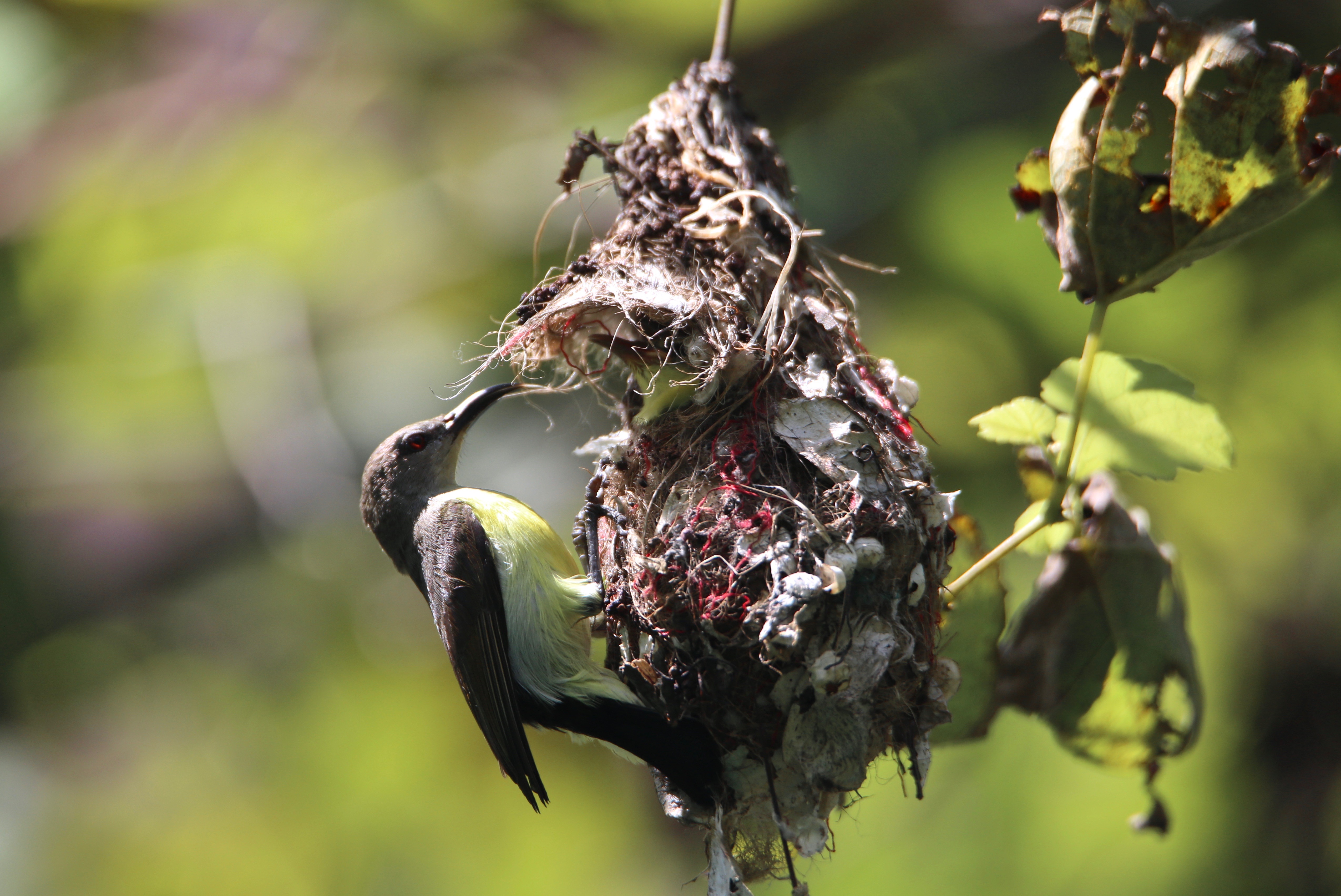
Sphere or ball-shaped nests are usually built in grass tussocks or in trees and are well camouflaged with pieces of lichen and moss bound with thin strands of spider web. These nests are often oval balls with an entrance on the side near the top.
Examples of birds that build sphere or ball-shaped nests include sunbirds and cisticolas. Sunbirds build their nests attached to two branches, while cisticolas build their nests deep in a little low bush or clump of grass, well hidden from predators.
These nests are well-suited to protect the eggs and chicks from predators and inclement weather.
Adherent Cup Nest
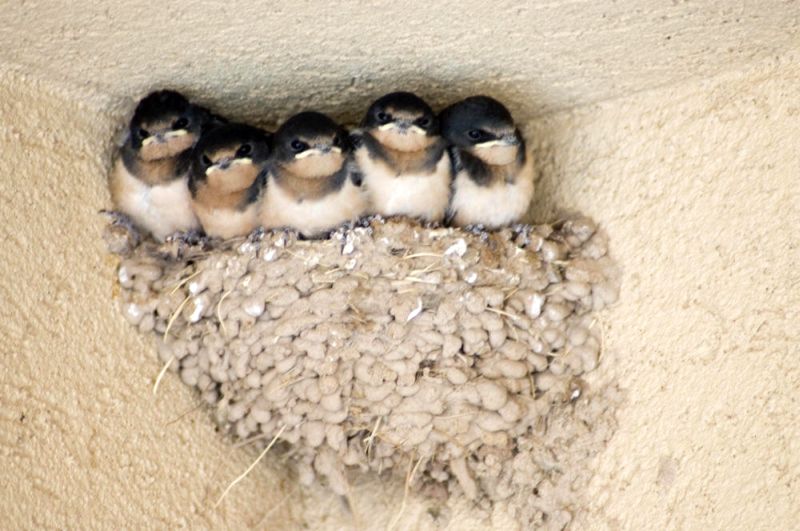
Adherent cup nests are a type of bird nest that is similar in shape to the standard cup nest, but their construction varies considerably. Adherent cup nests are cupped nests whose sides are attached by an adhesive substance, such as mud or saliva, to a vertical surface, like those of swifts and some swallows.
The most famous of these adherent nests are those of the white-nest swiftlet, also known as the edible nest swiftlet. These nests are constructed by the males of the species over a period of around 35 days and are made entirely of the bird’s saliva, which dries to form a hard cement-like material.
These nests are considered a delicacy in some countries, where they are used to make soup. Adherent cup nests are used by many bird species, including swallows, swifts, and some passerines.
Colonial Nest

Colonial nests are a type of bird nest where a group of birds congregates to nest in a relatively small area. Colonial nesting birds include seabirds such as auks and albatrosses, wetland species such as herons, and a few passerines such as weaverbirds, certain blackbirds, and some swallows.
Read more : Bees And Hummingbird Feeders
The size of these colonies can vary greatly, with some colonies consisting of only a few pairs of birds, while others can contain up to 200,000 nests. Colonial nesting confers several benefits to individuals, including better predator avoidance, enhanced food-finding, and access to limited nesting sites.
Some birds, such as the tufted puffin, nest in colonies but excavate their own burrows, while others, such as sand martins, are dependent on social nesting. The sociable weaver of southern Africa constructs massive, multi-family dwellings of twigs and dry grasses, accommodating as many as a hundred nesting pairs.
These structures resemble haystacks hanging from trees and have been likened to apartment buildings or beehives. Colonial nesting is especially widespread in birds, insects, and spiders and can often involve unrelated individuals breeding in high density.
Dome/Sphere Nest
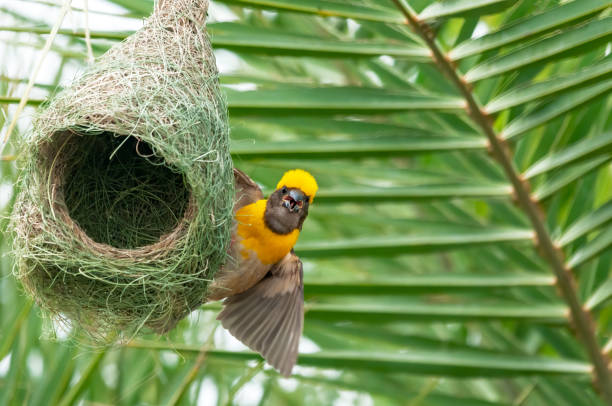
Dome or sphere nests are a type of bird nest that is almost completely enclosed and provides great protection and camouflage. The entrance to the nest is typically on the side, protecting it from the rain.
Unlike a cup nest, which is exposed to the elements, dome or sphere nests can be crafted from a wide range of materials and are fully enclosed, offering a greater amount of protection. Birds that build sphere nests include the American dipper, marsh wren, winter wren, ovenbird, and different meadowlarks.
The ovenbird, also known as the Rufous hornero, begins construction by creating a cup and then continues to mould thousands of mud pellets eventually creating a neat oven-shaped nest, hence the name, with a slit at the front and soft bedding inside.
Birds such as the white-throated dipper create their domes from soft vegetation such as moss and grass. These birds are water specialists and position their nests next to streams or rivers where they hunt aquatic insects and worms.
Africa’s hamerkop bird is also no stranger to the water and is famous for its gigantic dome-shaped nests, which take up to 6 weeks to construct and can measure almost 5 ft (4’ 11” / 1.5 m) in diameter.
Floating Nest
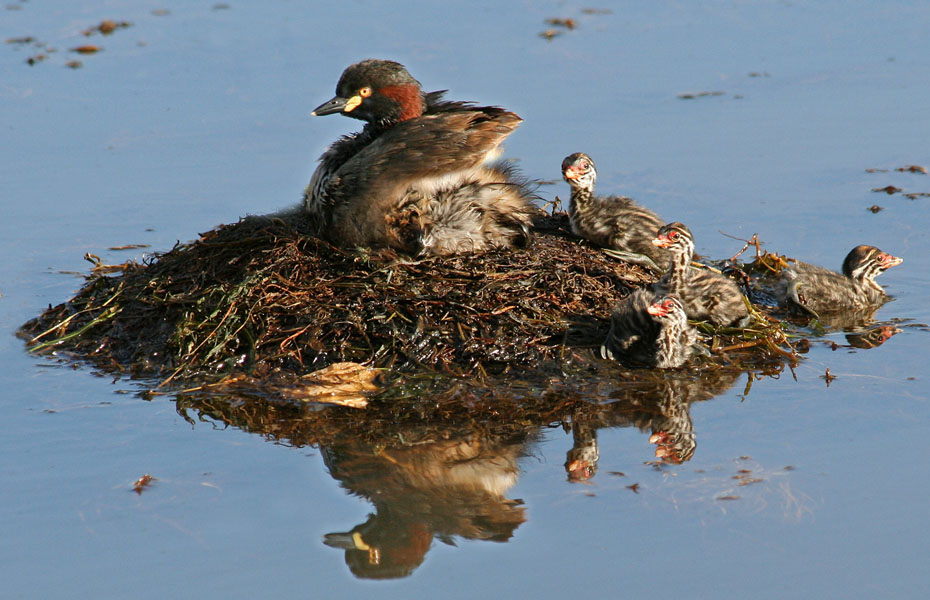
Floating nests are a type of bird nest that is built on the water’s surface, providing a safe and secure environment for eggs and young birds. These nests are often built by grebes, which are water birds that are excellent swimmers and divers.
The nests are made of plant material and are usually floating mounds with a depression in the middle, and the bulk of the nest is below the waterline. After hatching, chicks climb onto the back of the parent bird and are carried around on the water. Floating nests are also used by other bird species, such as ducks and swans.
In some cases, floating nests can provide resources for other wildlife, such as fish and invertebrates.
No-Fuss Nest
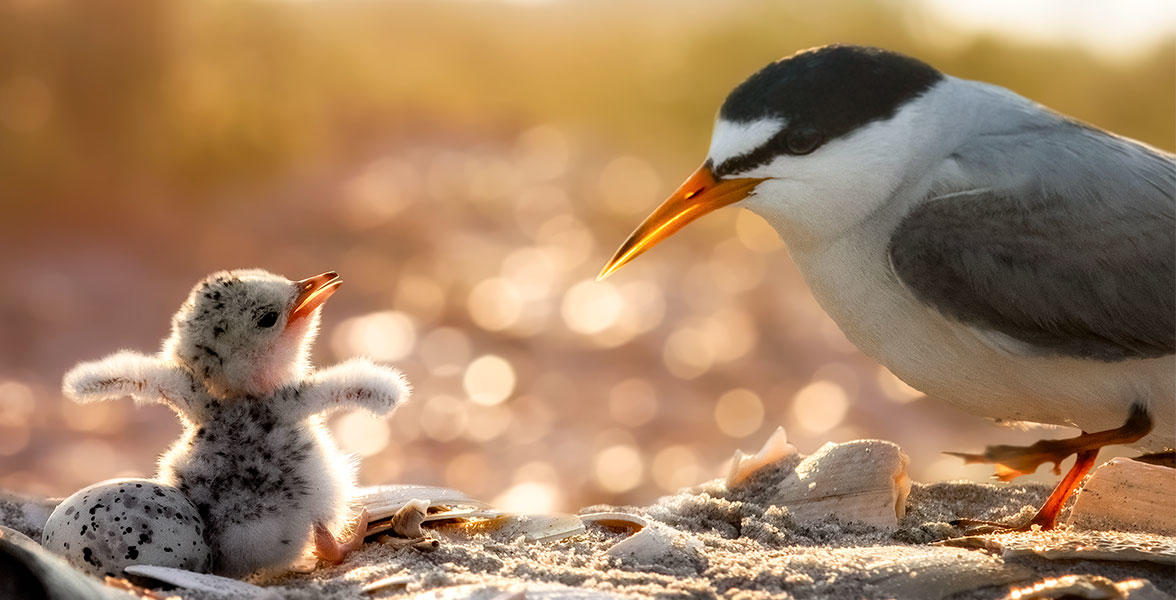
No-fuss nests are a type of bird nest that is simple and requires minimal construction. These nests are often made by birds that lay their eggs directly on the ground, such as killdeer, which lay their eggs on gravel or dirt before adding sticks, rocks, or other natural elements.
Other birds that build no-fuss nests include beach-nesting birds such as black skimmers, many species of terns, and piping, Wilson’s, and other plovers, which lay their eggs in shallow depressions scraped out in the sand.
Some birds, such as the common murre, emperor penguin, and short-eared owl, lay their eggs in the open or a relatively secluded spot without building any nest at all. These birds rely on their camouflage to protect their eggs from predators.
FAQS
1. What are the different types of bird nests?
There are 13 different types of bird nests, including standard cup, adherent cup, dome/sphere, pendant, colonial, cavity, platform, floating, burrow, mound, self-incubating, scrape, and no nest.
2. What materials are used to build bird nests?
Birds use a variety of materials to build their nests, including pliable grasses, weeds, mud, saliva, twigs, leaves, moss, lichens, feathers, small stones, shells, and spider silk.
3. What birds build cup nests?
Many passerines build cup-shaped nests, including blackbirds, warblers, thrushes, hummingbirds, and swifts.
4. What birds build platform nests?
Platform nests are built by raptors such as eagles and ospreys, as well as herons and other large wading birds.
5. What birds build burrow nests?
Burrow nests are built by birds such as puffins, shearwaters, and some kingfishers, as well as burrowing owls and other ground-nesting species.
6. What birds build dome/sphere nests?
Dome or sphere nests are built by birds such as the American dipper, marsh wren, winter wren, ovenbird, and different meadowlarks.
7. What is a floating nest?
A floating nest is a type of bird nest that is built on the water’s surface, providing a safe and secure environment for eggs and young birds. These nests are often built by grebes and other water birds.
8. What is a no-fuss nest?
A no-fuss nest is a simple type of bird nest that requires minimal construction. Birds that build no-fuss nests include killdeer, black skimmers, and many species of terns and plovers.
9. What is a colonial nest?
A colonial nest is a type of bird nest where a group of birds congregates to nest in a relatively small
area. Colonial nesting birds include seabirds, wetland species, and a few passerines.
Source: https://petstutorial.com
Category: Birds










